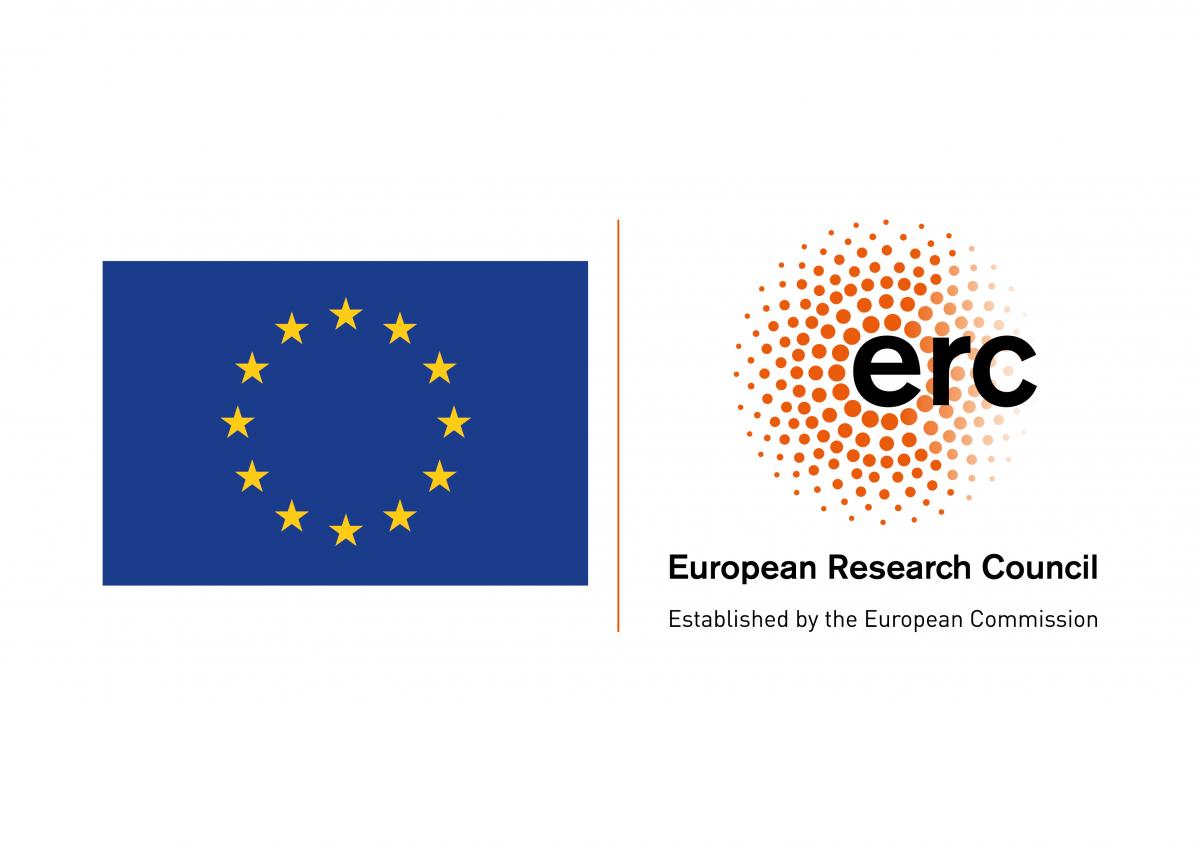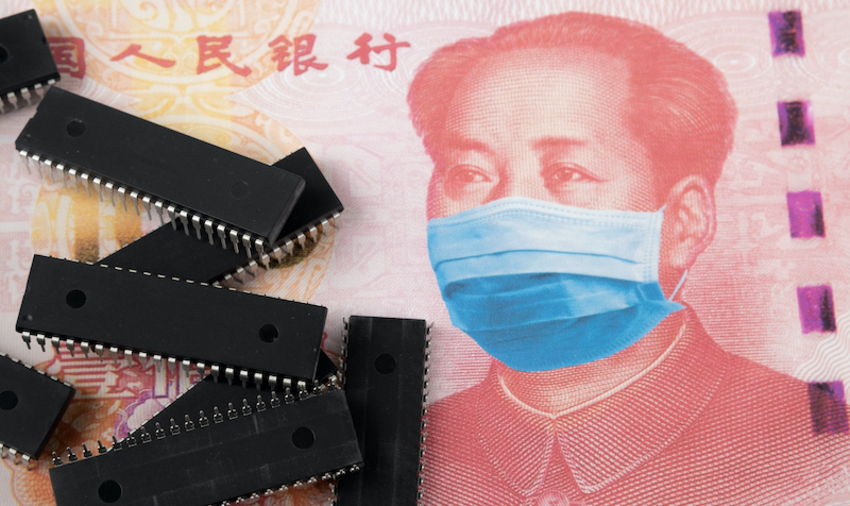Roy-ADRES Seminar *in-person* - Mar 7th

 Portrait of René Roy and stylised equations
Portrait of René Roy and stylised equations

Nick ARNOSTI is Assistant Professor at the Department of Industrial and Systems Engineering at the University of Minnesota. Prior to joining U of M, he was Assistant Professor at the Columbia Business School. He received a PhD in Operations Research from Stanford University in 2016.
His research focuses on market design, with particular emphasis on giving away social goods such as affordable housing and public school seats. He has also studied the allocation of hunting licenses, hiking permits, and discounted tickets to events.
Nick ARNOSTI will present a paper at the first Roy-ADRES Seminar of the semester on the theme:
More about Nick ARNOSTI and his research
Date: MONDAY, March 7th - 5 PM
Location: PSE - Jourdan Campus - R1-09
The next Roy-ADRES Seminar will host Emir KAMENICA (University of Chicago) on March 14th.

This project has received funding from the European Research Council (ERC) under the European Union’s Horizon 2020 research and innovation programme (grant agreement No 101001694)
Winter Break Read: M. Fioretti

 Silhouettes of heads discussing ideas
Silhouettes of heads discussing ideas
When the Department was created a little over 10 years ago, it simultaneously created its own collection of working papers – the Sciences Po Economics Discussion Paper series. Our goal is to make our latest research available to fellow economists, scholars and institutions all over the world as soon as possible.
The collection is available online on our website and will soon be completely available as well on the new the Sciences Po-HAL Institution Repository (former SPIRE) where it is linked to RePEC’s EconPapers.
As you will discover, the collection attests to the broadening of the Department’s topics, along with the recruitment of new, brilliant researchers, to include a theoretical economics research cluster, development economics and the extension of its expertise in macroeconomics, dealing notably with informational frictions – without neglecting its core fields in political economy, international economics, labour economics and econometrics.
Under the scientific direction of Department Head Thierry MAYER and permanent faculty member Benjamin MARX, our discussion papers have been flourishing – they are almost systematically taken up by international research networks and institutions in their working paper series (CEPR, IZA, NBER, …), and, of course, finally published.
If you are looking for something to read over the holidays and weekends, we are spotlighting a few recent Sciences Po Economics Discussion Papers from our younger researchers that have been picking up traction.
 Michele FIORETTI joined the permanent faculty of the Department in 2019, just after defending his thesis at the University of Southern California (USC).
Michele FIORETTI joined the permanent faculty of the Department in 2019, just after defending his thesis at the University of Southern California (USC).
Specialised in empirical industrial organization, behavioural economics, and applied microeconomics, his work focuses on understanding firms' strategies with applications on social impact firms and sectors with a social dimension such as the health and the energy sectors.
His paper Performance Pay in Insurance Markets: Evidence from Medicare (Sciences Po Economics DP 2021-02, May 2021), co-authored with Hongming WANG (Center for Global Economic Systems, Hitotsubashi University), was recently accepted for future publication in the MIT Press’ Review of Economics and Statistics.
Exploiting the introduction of the quality bonus payment initiative in the U.S. Medicare Advantage market, where Medicare services are provided by private insurers who receive subsidies from the government, Michele Fioretti and Hongming Wang test whether the pay-for-performance ultimately had the hoped-for effect, i.e. improvement of the quality of service at a lower cost.
In a CEPR VoxEU column, they framed their problem in the following manner: “As health spending continues to rise globally, pay-for-performance can be an attractive policy tool for promoting high-quality services at lower costs. But there are concerns that it weakens the finances of poor-performing hospitals in low-income areas."
They will discover that because the quality rating of private insurers relies heavily on health outcome measures, insurance companies preferred to reduce their risks. They offered lower premiums in healthier, low-risk counties and simultaneously raised premiums in riskier ones to select healthier enrollees, thus worsening regional disparities in healthcare access.
To find out why, read the paper !
More about Michele FIORETTI and his research
Discover the full Sciences Po Economics Discussion Paper series
Departmental Seminar *in-person* - Mar 7th

 Stylised calendar data
Stylised calendar data
 Elisa GIANNONE is currently on leave at the Centre de Recerca en Economia Internacional (CREi) from Penn State University where she is an Assistant Professor of Economics. She is also a Data Fellow at the Administrative Data Accelerator (Penn State University) and a Research Affiliate of the Centre for Economic Policy Research (CEPR). Prior to joining Penn State, she was a postdoctoral IES Research Fellow at Princeton.
Elisa GIANNONE is currently on leave at the Centre de Recerca en Economia Internacional (CREi) from Penn State University where she is an Assistant Professor of Economics. She is also a Data Fellow at the Administrative Data Accelerator (Penn State University) and a Research Affiliate of the Centre for Economic Policy Research (CEPR). Prior to joining Penn State, she was a postdoctoral IES Research Fellow at Princeton.
Her research interests include macroeconomics, regional and urban economics, international trade, and development economics.
Elisa GIANNONE will present a paper, joint with Qi LI, Nuno PAIXÃO, and Xinle PANG, at the next Departmental Seminar on the theme:
Unpacking Moving (read Abstract, PDF 4.91 MB)
More about Elisa GIANNONE and her research
Date: MONDAY, March 7th - 2:45 PM
Location: Department of Economics - 4th floor - Room H 405
The next Departemental Seminar will host Klaas MULIER (University of Ghent) on March 14th.
Friday Seminar *in-person* - Feb 25th

 Paper in a typewriter on which it is written "New Research"
Paper in a typewriter on which it is written "New Research"
![]()
Nourhan HASHISH is a PhD Candidate in Economics at Sciences Po working on a thesis entitled Essays in Labour and Political Economy, under the supervision of Sergeï GURIEV.
Nourhan HASHISH will present a paper, joint with Joop ADEMA and Jae CHO, at the next Friday Seminar on the theme:

Léonard LE ROUX is a PhD Candidate in Economics at Sciences Po working on a thesis entitled Essays on the Economics of African Cities, under the supervision of Benjamin MARX.
His research interests are in the use of econometric techniques to answer questions in development and environmental economics.
Léonard LE ROUX will present a paper at the next Friday Seminar on the theme:
The Political Economy of Mobility Restrictions Under Apartheid
Date: FRIDAY, February 25th - 12:30 PM
Location: Department of Economics - 4th floor - Room H 405
The next Friday Seminar will host Valentin MARCHAL and Pierre VILLEDIEU (PhD Candidates, Sciences Po) on March 11th.
COGITO: Protecting Global Value Chains

 Chinese bank note with mask and microchips, shortage due to Covid
Chinese bank note with mask and microchips, shortage due to Covid
Smoother Sailing for world trade
The pandemic has highlighted the importance of global value chains, an organisation of production which relies on the integration of components that come from all over the world. If one element goes amiss, the entire chain is affected. Understanding where the fragility of these chains comes from, how the propagation of shocks impact them, has become essential. These are precisely the questions Isabelle Mejean sets out to answer in her research project ‘Firm-to-Firm Trade Networks’. A project selected for its scientific excellence and innovative nature by the European Research Council (ERC) for a Starting Grant.
Why this project?
IM : I drafted my ERC project proposal just after being granted access to novel administrative data that allow me to gain a deeper, more detailed understanding of the structure of international trade. Traditionally, international trade analysis relies on data pertaining to bilateral trade between countries. By measuring the value of exports from one country to another and looking at the type of products exchanged, one can think about the geography of international trade and how national economies specialise in the production of goods.
In the 2000s, research in international trade began to use more systematically the data related to firms involved in international markets. The customs forms filled by exporters and importers proved to be an invaluable source of raw data that revolutionised the field. These data allowed researchers to focus their analysis on firms, e.g. on their production decisions both abroad and domestically, or their international development strategies. Using this type of data, my research aims to understand the role played by the very big firms, which dominate world trade but also play a central role in weaving national activities. When I first submitted my project in 2016, I had just gained access to even finer data that enabled me to represent international trade as a network of firms that interact through their production relationships, certain firms providing the inputs necessary for the production of others. These firms are the nodes of what we refer to as ‘global value chains’. Exchanges along these chains account for more than 50% of world trade today. My project aims to better understand how firms are connected to these chains but also the impact of such production structures at the aggregate level.
You aim to study the impact of shocks to international trade and its volatility based on micro-data. What type of shocks do you plan to analyse? What is your final objective?
IM : One of the immediate consequences of organising production this way is the increased interdependence of firms that are part of the chain. A car that comes off a French assembly line today is in fact made up of over 30,000 components, produced by over 30,000 firms, including firms located beyond the EU’s borders. For example, it is estimated that 10% of the value of a car produced in France pays for production factors in China.
In order to deliver the car, each firm that is involved in the production process must be able to deliver the necessary components on time. These production methods are extremely efficient but necessitate strong coordination and well-oiled logistics systems. With this type of production structure, any shock that might come to affect one particular firm will spread all along the chain, with consequences at every node of the chain. These shocks can be trivial in nature, such as a drop in productivity due to a hardware failure, or more dramatic, such as an extreme weather event that comes to affect firms of an entire region of the world.
One part of my project aims to quantify the international propagation of shocks along value chains. In a recent article, I used the first lockdown in China at the end of January 2020 to identify French firms that were the first to be exposed to covid-induced disruptions, before the virus had spread to Europe. In this article, we quantified how the disruption of input purchases from China caused by the early lockdown of the country spread to the French economy, through firms that were dependent on Chinese inputs.
I am also trying to understand which factors can make these production structures more or less robust. When faced with the same shock, such as the disruption in the supply of Chinese inputs mentioned above, which firms fared the best and why. How did their inventory management practices and supply policies differ?
Lastly, I would like to evaluate how these phenomena which are very microeconomic in nature might explain phenomena that are much more macroeconomic, such as the synchronisation of economic cycles between countries. As long as the observed interdependencies involve huge firms, not only do they affect the firms themselves but with them, the whole economy.
What data is available to you in order to carry out your analyses?
IM : My research relies mainly on French administrative data. The customs administration provides very detailed information on import and export activities for each individual French firm. In addition to that source, we can use data collected by the tax administration or the French Statistical Institute which gives us a better view of the characteristics of firms that are involved in the international markets, their sectors of activity, their activity in France, their cost structure, etc. The project is therefore very empirical. It takes advantage of one of France’s major assets which is the richness of its statistical information regarding firms. Using data that exhausts all aspects of the French production system, I have access to a huge quantity of information that is important if we are to understand the variety of international strategies deployed by firms and their ramifications at a greater scale. The first part of your project analyses the structure of trade relations between firms.
What are the decisive factors in shaping them?
IM : In this part of my project, I dig into the structure of these networks of firms. How does a firm come to choose this or that supplier for such or such an input? How do regulations, such as environmental norms, come into play and affect these decisions? Why is it that most firms have a network of suppliers that is highly concentrated, with, more often than not, a single supplier for each component? These are fundamental questions if we are to understand the structure of firm networks that channels the international transmission of shocks.
The second part aims to understand how the structure of trade relations between firms has an impact on international trade in general and on prosperity more broadly. What are the factors that lead to such an impact? In order to answer that question, let’s go back to the standard vision of world trade that emphasises the role of international exchanges as a means of risk diversification. In a country where consumers only have access to domestically produced goods, any variation in overall productivity will immediately affect consumer prices. Consumers are completely exposed to the risks related to shocks affecting local producers. Internationally open economies help diversify these risks: a decrease in productivity in France will be compensated, on average, by an increase in productivity elsewhere. But when international exchanges take the shape of interwoven value chains, risk diversification is less operational because of the manner in which shocks spread as discussed before.
Studying the structure of trade allows us to better understand the forces that promote risk diversification and those which, on the contrary, exacerbate them. It also allows us to pinpoint the fragile areas of world trade.
Here the representation of international relations as a network is particularly useful. Take for instance a computer network. The network’s architecture aims to fluidity traffic but to also satisfactorily disseminate information. Its objective is to prevent nodal traffic jams but also to privilege the shortest informational paths possible in order to accelerate the dissemination of information. Infrastructures will be reinforced at the ‘hot spots’ of the network where a lot of information is likely to be circulating. The network’s architect will also provide for secondary routes which will only be used if there’s a traffic jam at one of the hot spots. International trade runs much like a computer network. The ‘hot spots’ are located where there is a concentration of a large number of transactions. It can be the logistical infrastructure of the Port of Rotterdam or the Suez Canal. But value chains have also helped create sectors and even single firms that produce inputs for a great many actors in world trade. Take, for example, the firm TMSC which is the biggest semiconductor foundry in the world and which supplies 50% of these products to meet world demand. Identifying these hot spots allows us to better understand and anticipate fluctuations in world trade. And this is only possible with a very specific, granular knowledge of the structure of exchanges.
Due to the pandemic, we are currently experiencing disruptions in the supply of goods in certain sectors, such as the automobile and pharmaceutical industries. What is your point of view on this issue? Were these types of shocks that you wanted to analyse when you first proposed your research project?
IM : Yes, that’s exactly it! It is even astounding to see just how crucial these issues have become in the context of the Covid-19 crisis. During the first Covid wave in March 2020, almost all of the biggest actors in international trade received a massive productivity shock: in order to deal with the sanitary crisis, government-imposed measures of social distancing which slowed down production almost everywhere. During this first wave the question of value chains wasn’t really important, because production collapsed worldwide. However, in the following 18 months, understanding how value chains work became key to understanding the aggregate statistics of production and trade. As of May 2020, economic activity resumed, but at very unequal rhythms depending on the country and a succession of ‘stops and starts’ depending on the sanitary situation of each economy. China recovered very quickly while Europe and the United States’ economies were still slow. Then the sanitary situation improved but for a certain number of big, emerging economies such as India and Brazil, which saw Covid spiking and the enforcement of lockdowns. Lastly, the freight sector was completely disorganised by the crisis, with huge port congestions, notably in China.
The first signs of these market distortions appeared at the end of 2020 as severe tensions in the market supply of raw materials or of major inputs, such as semiconductors. When 50% of the world’s demand for semiconductors is met by one single Taiwanese firm, a large number of buyers were suddenly exposed to the production difficulties of this firm. The concentration in the supply of goods through world value chains may have made production more efficient but has also made it more vulnerable to shocks. The exceptional succession of shocks due to the pandemic has shed light on the lack of resilience of value chains. To the point that this issue has become a central preoccupation for public actors. If we are to imagine efficient public policies to deal with these supply chain disruptions, we must better understand these weaknesses. My work participates in the production of this crucial knowledge.
A fully referenced article was first published in Sciences Po's Cogito Research Magazine, n° 17.

Isabelle Mejean is Professor and permanent faculty member of Sciences Po’s Department of Economics. Her area of expertise is in international trade. She is particularly interested in how countries and companies have become gradually specialised and integrated into the international trade circuit, by way of global value chains, and in the macroeconomic consequences of these configurations.










